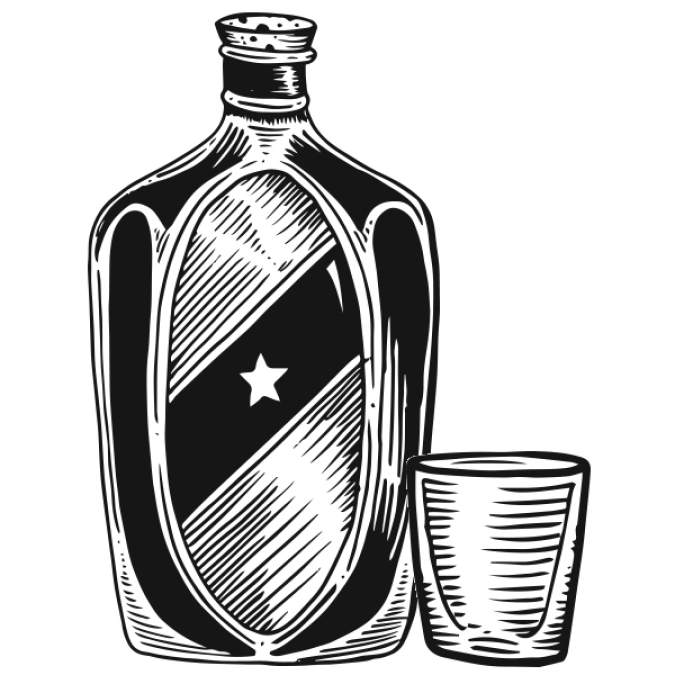Americans are slaves to our single-varietal red wines. Confronted by a blend, many of us run back to the wines we know: cabernet sauvignon, merlot, and the like. Yet throughout much of the world, red wines are the product of two or more blended varietals. Increasingly, more Washington winemakers are going this route, and their wines are growing ever more common on local wine lists. With that in mind, here is some must-read background info and tips to help you navigate the choices:
The reason for blending varietals is that “the power of blends is for real,” says Woodinville winemaking consultant Erica Orr. “I think the blend is greater than the sum of its parts.” It’s definitely a fact (with a few rare exceptions) that wines made from multiple grapes tend to be more complex than those made from just one varietal.
But blending isn’t just about combining varietals. “Winemakers talk about blends from a varietal composition standpoint,” says Orr, “but also in terms of blending different ‘lots.’ The lot can be defined many ways: by vineyard, by clone, by how a vineyard parcel was fermented, if it was barrel-aged in new oak or neutral oak, how the barrels are toasted, etc.” The result is a blend that “is more interesting, more nuanced, and more delicious than just one of those parts.”
Generally speaking, blends fall into a couple of classic archetypes: Bordeaux blends centered on cabernet sauvignon and merlot, and southern Rhone blends centered on grenache and syrah. Bordeaux blends are known for their beguiling combination of power and prettiness, tannic weight, and long aging potential. They also take very well to oak. Rhone wines tend to be more about earthiness, savory notes, explosive fruit, and acidity. Both have loyal followings—and a place on Seattle shelves and menus.
Of course, few Washington winemakers are content to stick with the tried-and-true blends that European winemakers have been making for centuries. With large amounts of both cabernet sauvignon and syrah planted in the state, it’s only natural that some winemakers have started combining them. “I’m thinking of Guardian’s Chalk Line or William Church 2 Spires,” Orr says. “The 2011 Callisto from Baer has 40 percent syrah in it. These wines can be really approachable and delicious young; they have a dark blackberry/black fruit character, a plushness from the syrah and a more high-toned, cherry-fruited, serious tannin structure from the cab.”
It’s that ease to drink young that drives some of the blends. As Jeff Lindsay-Thorsen, head sommelier at RN74 and co-founder of WT Vintners, says, “Cabernet is king in Washington, even if syrah should be the star.” Yet cabernet sauvignon can be hard to drink in its youth: tannic, tight, and lacking fruit. That’s why it’s classically blended with merlot in Bordeaux, and why cab/syrah blends are all the rage in Washington. They allow winemakers to get their wine on the market sooner while still offering a product that tastes good the moment the buyer gets the wine home. In fact, the combination of cabernet sauvignon with other varietals is considered by some local winemakers to be the future of the Washington wine industry.
Bottom line: Blends are definitely both a longstanding part of the winemaking world and something of a trend in Washington. But how do you approach them at the dinner table or in a restaurant? One thing to be wary of is that a poorly constructed blend can just kind of taste like “red wine.” That’s not necessarily bad, but it might be less exciting than a more well-defined wine. Another dirty secret of the winemaking trade is that blends can often be a dumping ground for lower-quality grapes. Sometimes blending lesser lots can save a wine, but sometimes the wines just taste flat and uninteresting.
That said, there are plenty of awesome blends to check out. Generally speaking, cabernet-heavy blends still need a bit of aging before they reach their true potential, while merlot- or syrah-based blends are ready to drink sooner. The added complexity in blends also makes them more versatile in food pairings: With a broader range of fruit and non-fruit characteristics, they “play nice” with more dishes. They do tend to be relatively heavy, but because of the broader range of fruits and the more complex structure, well-made red blends are often a nice “compromise” when you’re trying to please a lot of different types of wine drinkers. Almost everyone can find an aspect of the wine to love.
A couple of pieces of advice: In these relatively early days of hybrid blends, I’d avoid the really inexpensive ones. While there might be the occasional gem, those wines are much more likely to be the dregs of the harvest. Look for wines over about $20 in the shop, or $50 in a restaurant.
Similarly, avoid wines that have too much merlot and syrah. Those two grapes both have a tendency to get super-ripe and juicy, and combined they can create the effect of an almost artificial sweetness, like cherry cough syrup. Specific amounts might vary, but I’d look for wines that are less than 50 percent combined syrah and merlot.
I think that for years, red blends carried a bit of a stigma in the minds of “serious” wine drinkers. They were simple wines, or a dumping ground for mediocre grapes, or a science project that didn’t show proper respect for the established (meaning French) traditions of winemaking. Yet it’s the willingness to experiment that has pushed the wine world’s frontiers in fascinating and exciting ways, and plenty of Washington winemakers have shown that you can create world-class wine without a slavish devotion to tradition.
So next time you’re choosing a bottle with dinner, consider one of the many blends you’ll find at a Seattle restaurant with a well-curated wine list. And as always, never be afraid to ask questions. If a restaurant’s chosen to include quality blends, it’ll no doubt have plenty to say about them. E
food@seattleweekly.com






